
6 7
NOTE: We strongly urge you to read this manual in its entirety before your first ride. At the very least, read and
make sure that you understand each point in this section, and refer here for any issue which you don’t completely
understand. Please note that not all bikes have all the features described in this manual. Ask your local stockist to
point out the features of your bike.
A. Bike Fit
1. Is your bike the right size? To check, see Section 3.A. If your bike is too large or too small you may lose control
and fall. If your new bike is not the right size, ask your stockist to exchange it before you ride it.
2. Is the saddle at the right height? To check, see Section 3.B. If you adjust your saddle height, follow the Mini-
mum Insertion instructions in Section 3.B.
3. Are saddle and seat post securely clamped? A correctly tightened saddle will allow no saddle movement in
any direction. See Section 3.B.
4. Are the stem and handlebars at the right height? If not, see Section 3.C.
5. Can you comfortably operate the brakes? If not, you may be able to adjust their angle and reach. See Section
3.D and 3.E.
6. Do you fully understand how to operate your new bike? If not, before your first ride, ask your stockist to
explain any functions or features you do not understand.
B. Safety First
1. Always wear an approved helmet when riding your bike, and follow the helmet manufacturer’s instructions for
fit, use and care.
2. Do you have all the other required and recommended safety equipment? See Section 2. It’s your responsibility
to familiarize yourself with the laws of the areas where you ride, and to comply with all applicable laws.
3. Do you know how to correctly secure your front and rear wheels? Check Section 4.A.1 to make sure. Riding
with an improperly secured wheel can cause the wheel to wobble or disengage from the bike, and cause
serious injury or death.
4. If your bike has toe clips and straps or clipless (“step-in”) pedals, make sure you know how they work (see
Section 4.E.) These pedals require special techniques and skills. Follow the pedal manufacturer’s instructions
for use, adjustment and care.
5. Do you have “toe overlap”? On smaller framed bikes your toe or toe clip may be able to contact the front
wheel when a pedal is all the way forward and the wheel is turned. Read Section 4.E. to check whether you
have toe overlap.
6. Does your bike have suspension? If so, check Section 4.F. Suspension can change the way a bike performs.
Follow the suspension manufacturer’s instructions for use, adjustment and care.
7. Placing fingers in or around the chain area risks entrapment and injury.
C. Mechanical Safety Check
Routinely check the condition of your bicycle before every ride.
Nuts, bolts, screws & other fasteners: because manufacturers use a wide variety of fastener sizes and shapes
made in a variety of materials, often diering by model and component, the correct tightening force or torque
cannot be generalized. To make sure that the many fasteners on your bike are correctly tightened, refer to the
Fastener Torque Specifications in Appendix D of this manual or to the torque specifications in the instructions
provided by the manufacturer of the component in question. Correctly tightening a fastener requires a calibrated
torque wrench. A professional bicycle mechanic with a torque wrench should torque the fasteners on your bike. If
you choose to work on your own bike, you must use a torque wrench and the correct tightening torque specifica-
tions from the bike or component manufacturer or from your stockist. If you need to make an adjustment we urge
you to exercise care, and to have the fasteners checked by your stockist as soon as possible.
WARNING : Correct tightening force on fasteners – nuts, bolts, screws – on your bicycle is important. Too little
force, and the fastener may not hold securely. Too much force, and the fastener can strip threads, stretch,
deform or break. Either way, incorrect tightening force can result in component failure, which can cause you
to lose control and fall.
Make sure nothing is loose. Lift the front wheel o the ground by two or three inches, then let it bounce on the
ground. Does anything sound, feel or look loose? Do a visual and tactile inspection of the whole bike. Are there
any loose parts or accessories? If so, secure them. If you’re not sure, ask someone with experience to check.
Tyres and wheels: Make sure tyres are correctly inflated (see Section 4.G.1.) Check by putting one hand on the
saddle, one on the intersection of the handlebars and stem, then bouncing your weight on the bike while looking at
tyre deflection. Compare what you see with how it looks when you know the tyres are correctly inflated; and adjust
if necessary. Are the tyres in good condition? Spin each wheel slowly and look for cuts in the tread and sidewall.
Replace damaged tyres before riding the bike. Are
the wheels “true”? Spin each wheel and check for brake clearance and lateral wobble. If a wheel wobbles side
to side even slightly, or rubs against the brake pads, take the bike to a qualified bike stockist to have the wheel
corrected.
CAUTION : Wheels must be true for rim brakes to work eectively. Wheel trueing is a skill which requires
special tools and experience. Do not attempt to true a wheel unless you have the knowledge, experience and
tools needed to do the job correctly.
Wheel rims clean and undamaged? Make sure the rims are clean and undamaged at the tyre bead and, if you have
rim brakes, along the braking surface. Check to make sure that any rim wear indicator marking is not visible at any
point on the wheel rim.
WARNING : Bicycle wheel rims are subject to wear. Ask your stockist about wheel rim wear. Some wheel rims
have a rim wear indicator which becomes visible as the rim’s braking surface wears. A visible rim wear indicator
on the side of the wheel rim is an indication that the wheel rim has reached its maximum usable life. Riding a
wheel that is at the end of its usable life can result in wheel failure, which can cause you to lose control and
fall.
Brakes: The brakes need to be set up according to the correct countries law. It’s very important to your safety that
you learn and remember which brake lever controls which brake on your bike. Traditionally in the UK, the right brake
lever controls the front brake and the left brake lever controls the rear brake; but, to ensure that your bike’s brakes
are set up correctly, squeeze one brake lever and look to see which brake, front or rear, engages. Now do the same
with the other brake lever.
Check the brakes for proper operation (see Section 4.C.) Squeeze the brake levers. Are the brake quick-releases
closed? Are all the control cables in place? If you have rim brakes, do the brake pads contact the wheel rim squarely
and make full contact with the rim? Do the brakes begin to engage within an inch of brake lever movement? Can
you apply full braking force without the levers touching the handlebar? If not, your brakes need adjustment. Do not
ride the bike until the brakes are properly adjusted by a professional mechanic.
1/ INTRODUCTION


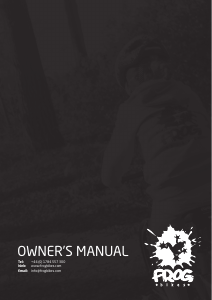

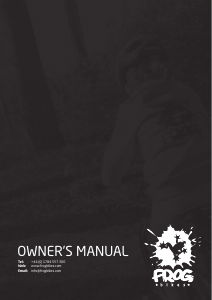
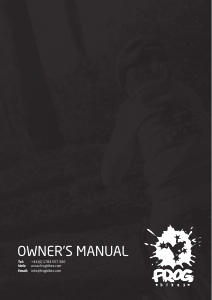
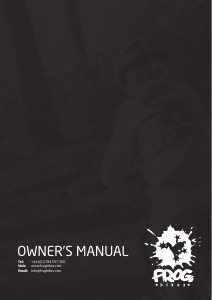
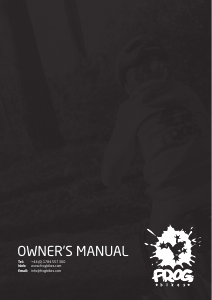
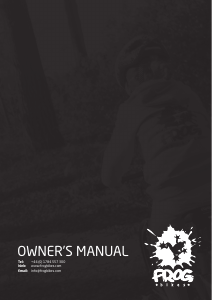
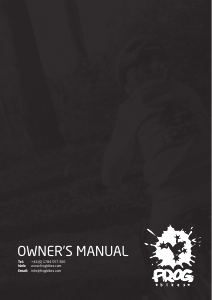
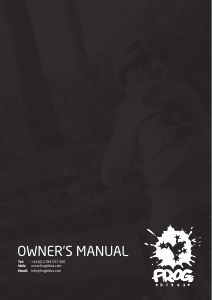

Join the conversation about this product
Here you can share what you think about the Frog Road 67 Bicycle. If you have a question, first carefully read the manual. Requesting a manual can be done by using our contact form.